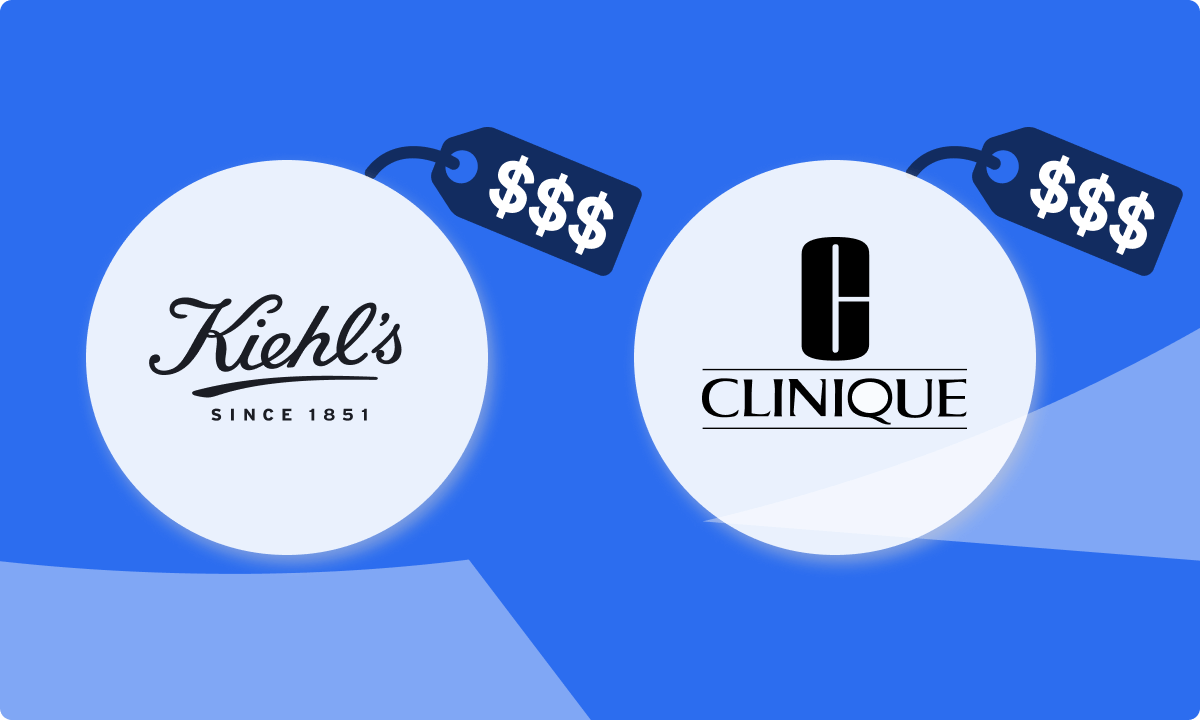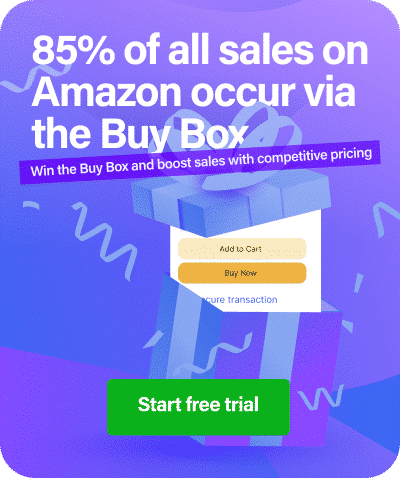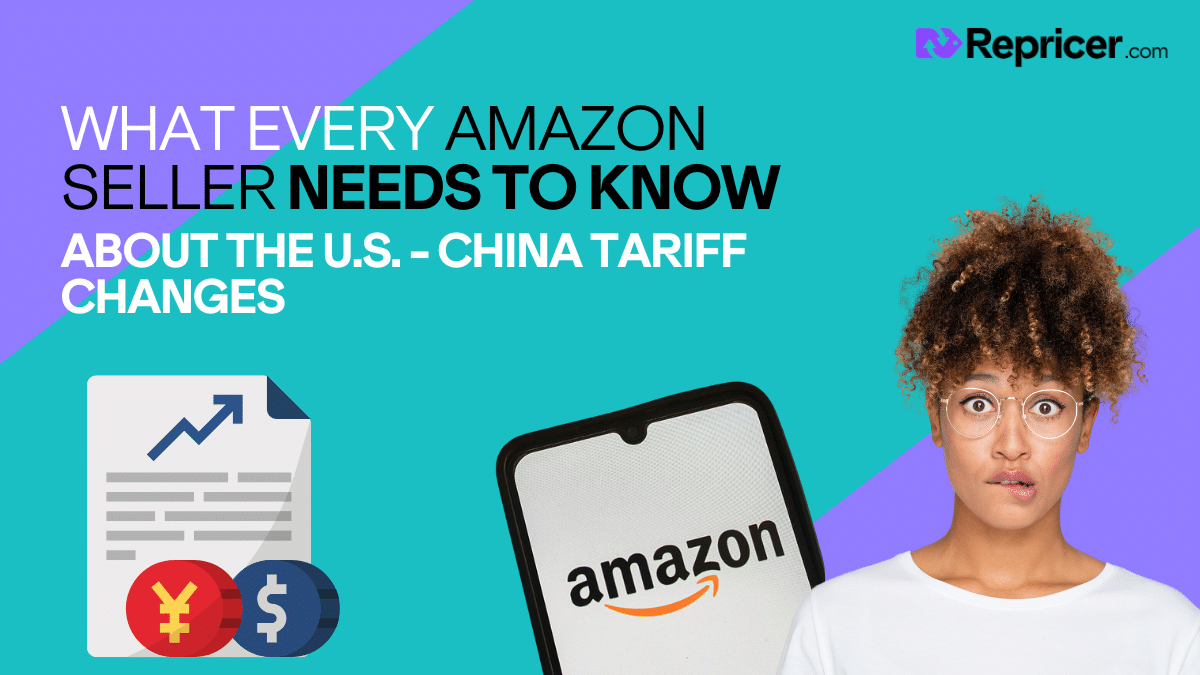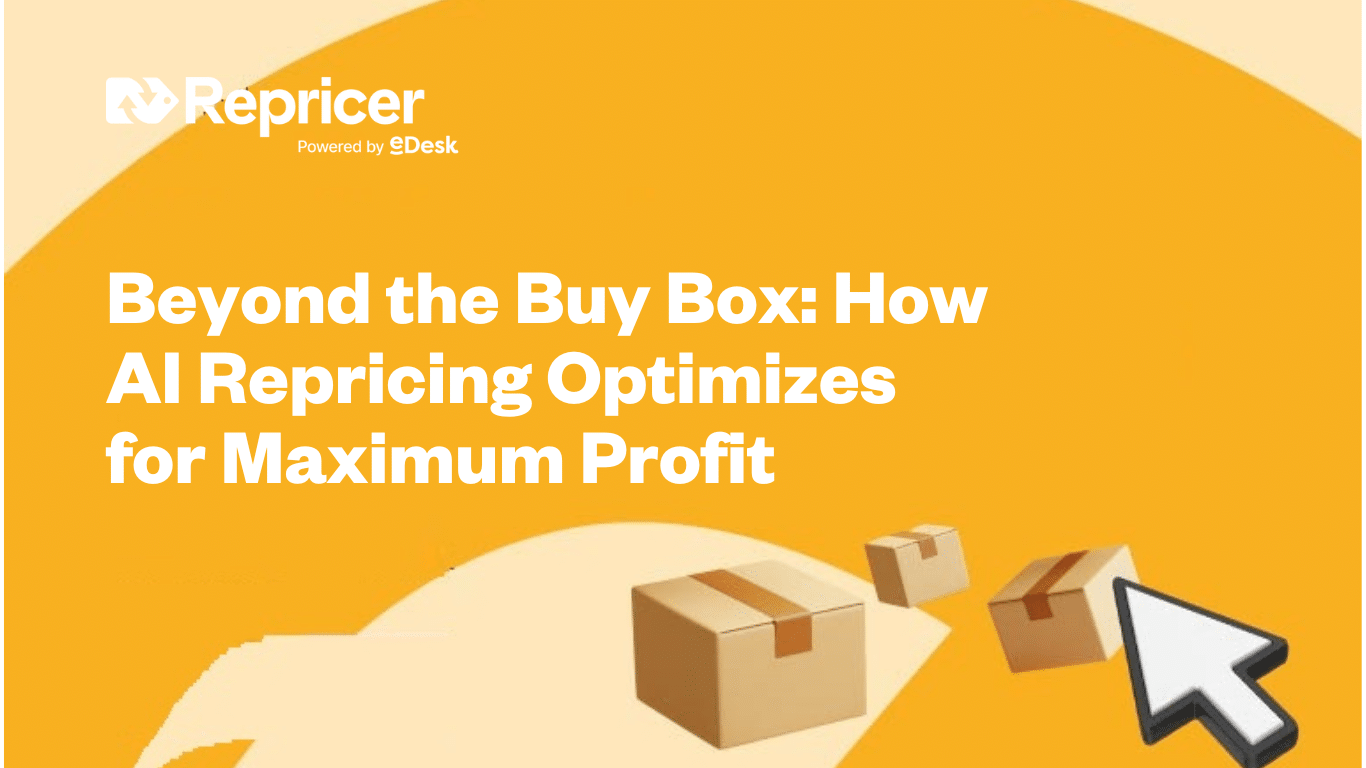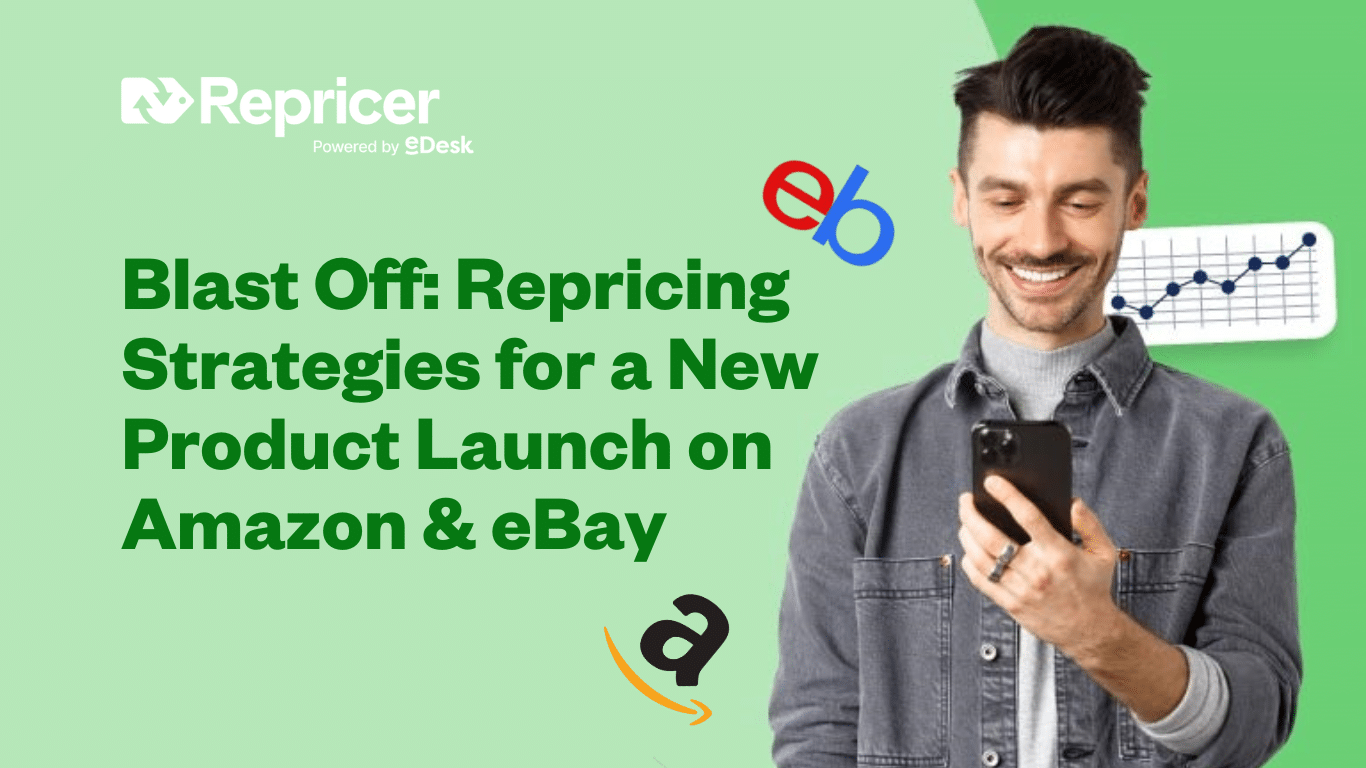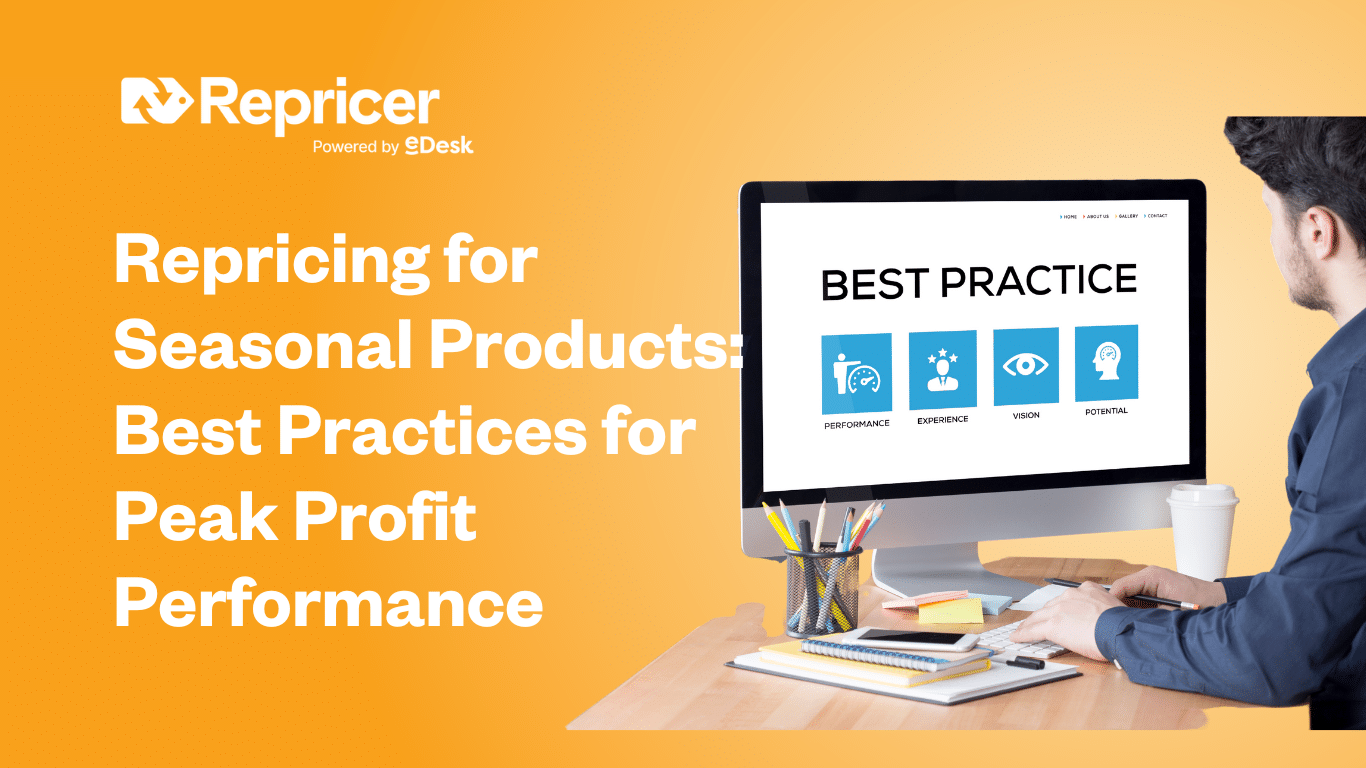Recently, Amazon has seen a slew of major brands joining its storefront to sell to customers. Some of these brands include Estee Lauder starting to sell its Clinique brand this past March and L’Oréal beginning to sell Lancôme last October. Most recently, Kiehl’s Since 1851 announced its own entrance into the Amazon Premium Beauty store.
It’s clear that many brands that had previously held back from selling on Amazon are taking the plunge. But what do you need to know if you want to join in on selling your own products? One thing big brands have in common: a proper pricing strategy. Your storefront should, too.
The Importance of Pricing
When it comes to selling, of course your goal is likely to make as much money as possible at the highest margin possible. That’s why you need to consider pricing. In order to make money, you have to remember… you need to sell lots of product!
There are a few things that we all consider when setting or optimizing pricing:
- Market Research: Understanding competitor pricing and market trends.
- Product Differentiation: Identifying and marketing your product’s unique features.
- Value Proposition: Aligning pricing with the perceived value of your product.
- Cost Structure: Ensuring prices achieve desired profit margins.
- Customer Segmentation: Tailoring pricing to different customer segments.
- Dynamic Pricing: Implementing pricing strategies based on demand, seasonality, or stock levels.
In addition to these considerations, Amazon has a rather complex algorithm. There are two types of prices on Amazon that you need to understand if you are a seller: item price and the total price.
The item price is the cost of the product, which consumers will see when looking at your storefront or adding an item to their cart. This price does not include tax or shipping cost.
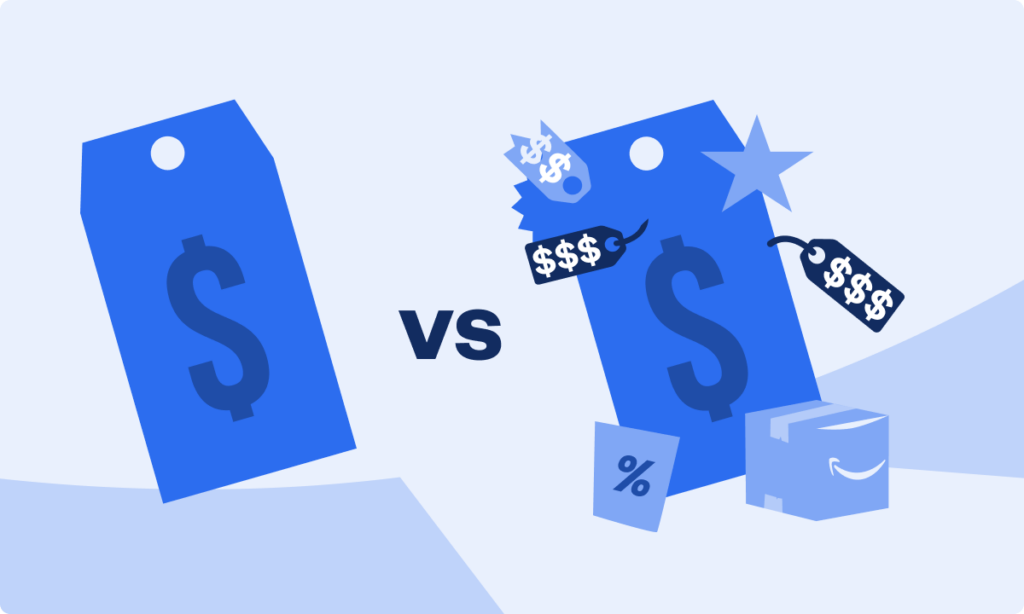
Total price, also sometimes called landed price, is the price of the item with everything else included – discounts, specials/promotions and rebates; shipping and handling; low-price guarantees; and business practices.
This model is based around the idea that Amazon wants to keep prices as low as possible for the buyer. Though this is a factor when determining your pricing, you should also consider the convenience factor – would your items get the same volume of traffic somewhere other than Amazon?
Why Amazon?
If you’re still not convinced about why Amazon is right for your brand, the environment has evolved massively for brands over the past few years. For example, Amazon has announced that it will be facilitating many more storefronts to major brands that typically sell in traditional department stores.
RetailWire found that 51% of consumers start their online searches for products on Amazon as of Q3 2023, followed by a search engine 39%, Walmart.com 34%, and YouTube 23%. This is largely, in part, due to accessibility and ease of online shopping.
Amazon hit nearly 575 billion U.S. dollars in net sales revenue worldwide in 2023, prompting more businesses to join the online retailer’s marketplace. Many businesses have found Amazon to be a platform for business growth.
Amazon ships to more than 100 countries and regions worldwide, which opens up your consumer base significantly. In addition, Amazon was ranked the most trusted brand by consumers in 2022. If you are a business that has only shipped within the U.S., selling on Amazon will allow you to hit other markets while working with a trusted marketplace.
For Kiehl’s the justification was clear. “Launching in the Amazon Premium Beauty store marks a new chapter in Kiehl’s journey of over 170 years of skincare and innovation,” said Kiehl’s general manager John Reed said in a press release. “Inspired by our heritage as a neighborhood apothecary brand, this collaboration allows us to continue our legacy while providing high-performance skincare solutions at even greater scale.”
Differential Pricing
It is not uncommon for brands to have price differentials between their online store and marketplace stores, or indeed between different marketplaces.
Kiehl’s for example, on their best-selling ‘Ultra Facial Cream with 4.5% Squalane’ have very clearly differentiated price strategies between their new Amazon store and the exact same product on kiehls.com.
Taking the 4.2 fl oz jar, the item price is $67 on Amazon and discounted to $50.22 on their own kiehls.com webstore. That’s a price difference of 25% between the two stores!
On Amazon, this product is eligible for free shipping and free returns, so the landed cost is the same as the item price. On kiehls.com there is a delivery fee, but there is an additional 10% discount and free delivery when the customer signs up for auto-replenish.
The strategy is very clear here. Amazon is a great place to discover Kiehl’s brand and product range. The product is clearly selling at high volumes on Amazon. However, Kiehl’s is banking on consumer’s price checking against their own store and they’re more than willing to incentivise customers to shop directly with them.
Setting the Right Price on Amazon: The Key to Success
As major brands like Estee Lauder, L’Oréal, and Kiehl’s enter Amazon’s marketplace, it’s clear that a robust pricing strategy is essential for success. By understanding and leveraging Amazon’s pricing dynamics—such as item price versus total price—you can position your products effectively to tap into Amazon’s massive, trusted, and global consumer base.
Whether it’s aligning with market expectations or implementing differential pricing, your pricing strategy can drive sales and brand growth on this powerful platform. Embrace the Amazon opportunity to expand your reach and maximize your potential.
With eCommerce price optimization solutions like Repricer.com, you can effectively manage pricing strategies like those deployed by Kiehl’s across your online store and Amazon, eBay, Walmart, Macy’s and all the other marketplaces where you sell. For a free consultation on how to better manage your pricing across multiple platforms, book a no-obligation call with our consultants.

